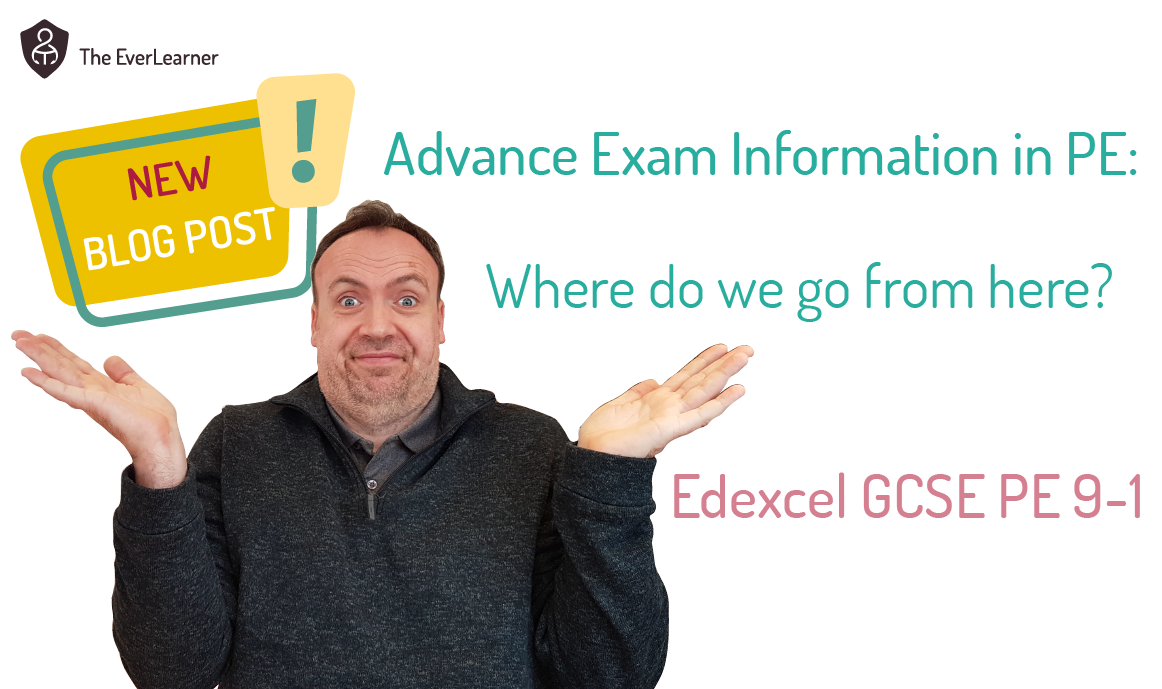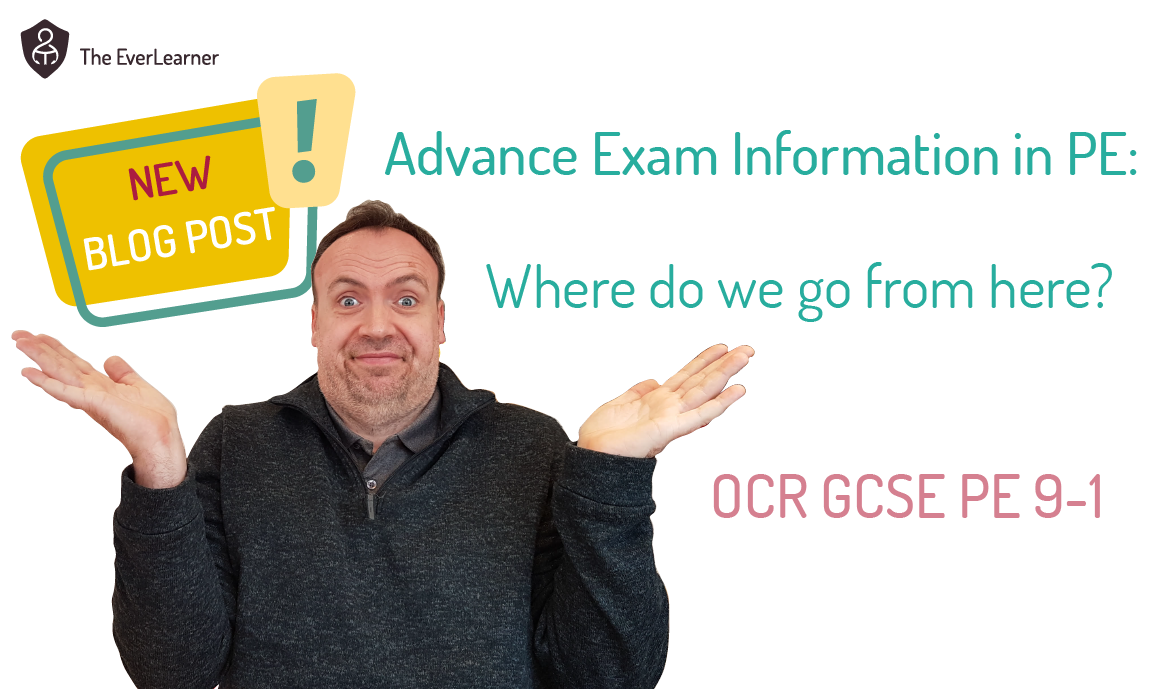Advance Exam Information in AQA Linear GCE (A-level) PE: Where do we go from here?
In a rush? Jump to the specific question/section.
➚ Q: What guidance has been published for PE?
➚ Q: What are the implications for my classroom teaching?
➚ Q: What is the specific guidance from AQA for A-level PE?
➚ Q: What are James's general recommendations?
➚ Q: What are James's recommendations for AQA A-level PE Paper 1?
➚ Q: What are James's recommendations for AQA A-level PE Paper 2?
➚ What is James's guidance regarding synoptic questions?
➚ Enquire about exam-board-specific revision events with James
Q: What guidance has been published for PE?
On Monday 7th February 2022, all exam boards published their advance exam information for PE and Sport courses examined in summer 2022. The aim of this guidance can be viewed here:
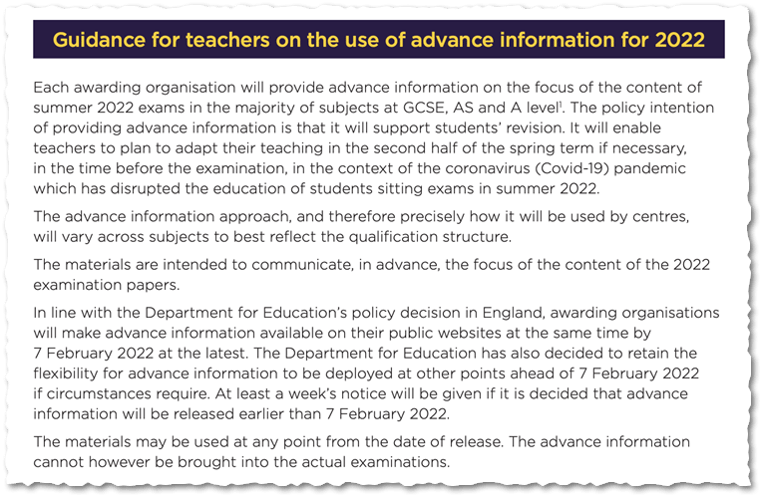 Extract taken from JCQ’s publication: Advance Information for Ofqual Regulated General Qualifications (Summer 2022)
Extract taken from JCQ’s publication: Advance Information for Ofqual Regulated General Qualifications (Summer 2022)
JCQ have guided the exam boards to provide information that does not jeopardise these principles: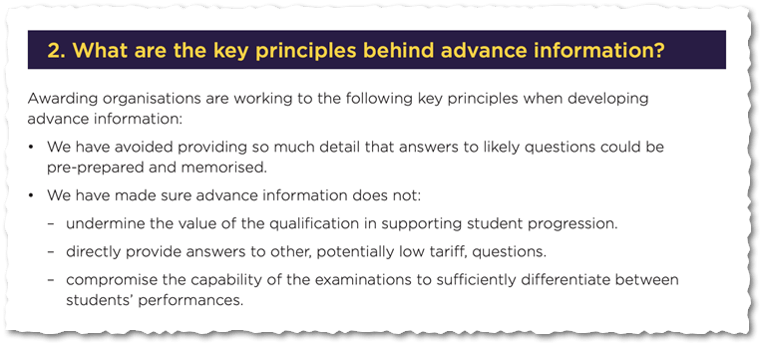
So, with these principles in mind, teachers and students received the advance exam information and what follows is aimed at achieving three things:
1. Establishing core educational principles by which teachers should use the advance information.
2. Interpreting each batch of advance exam information.
3. Making recommendations on each batch of advance exam information (covering all major courses).
Q: So, what are the implications for my classroom teaching?
It is vital that core educational principles must be applied by teachers when using the AEI:
1. Students have the right to learn all knowledge and skills relating to a course.
2. The AEI provides relevant context by which specific content and skills can be honed.
3. Students need to be guided to prepare all specification knowledge and skills.
Q: What is the specific guidance from AQA for A-level PE?
First of all, it is vital that you view the full guidance from AQA here.
This is our summary of the listed content:
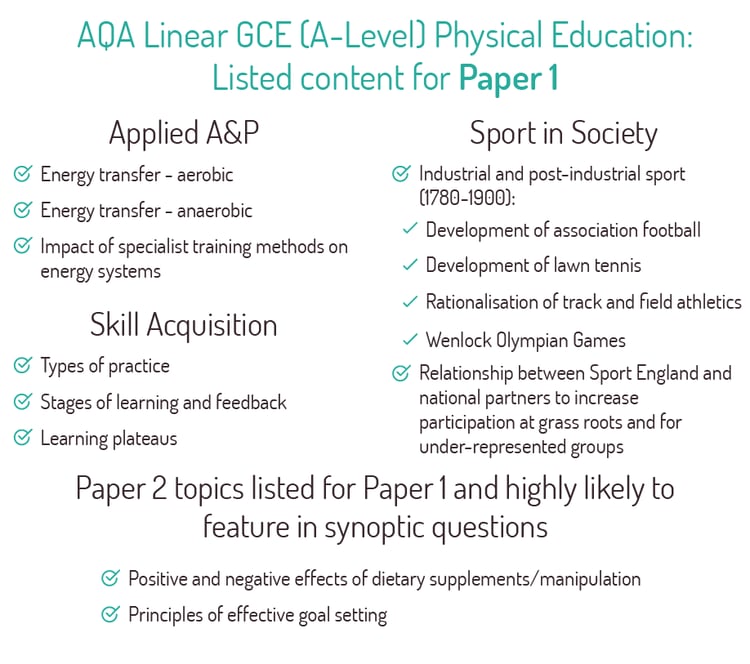
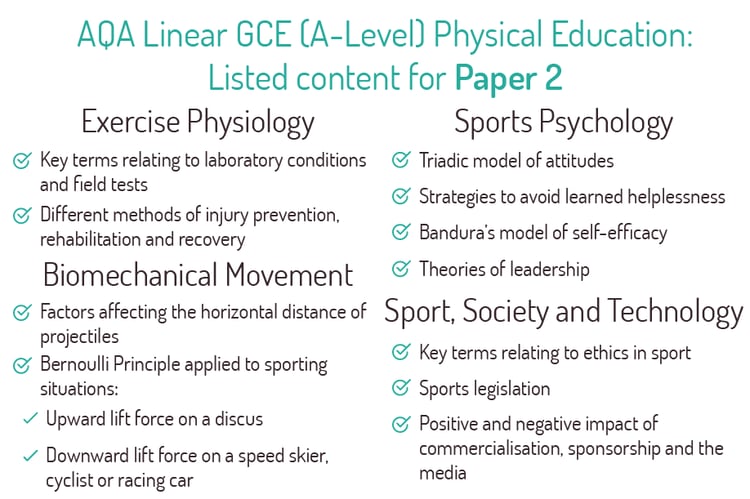
Q: What are James's general recommendations?
1) Consider the AEI material to be relevant for questions with a value of equal to or greater than three. This means that two and one-mark questions are potentially not referenced in the AEI and students must be prepared to answer questions on any topic area within smaller marked questions.
2) Teach for skill across the entire AQA course/revision period. Of all PE and sport examined qualifications, AQA A-level is the most predictable in terms of the skill set that students must perform. It is essential that students are supported to develop the skills of analysing and evaluating to perform well on their two papers. Take a look at this analysis of all AQA linear GCE paper 1 and paper 2:
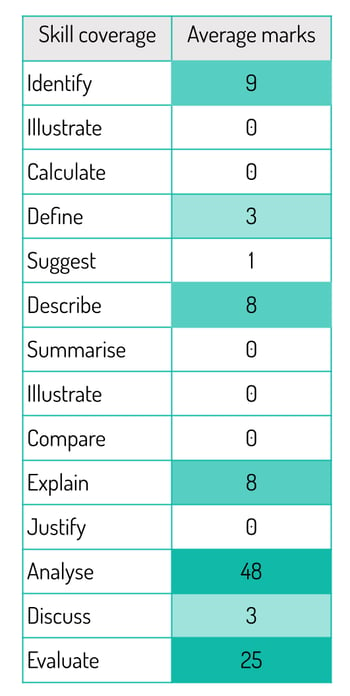
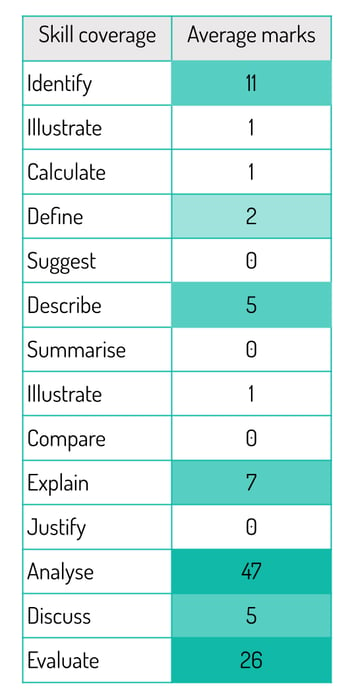
In other words, success or failure lies in the student’s capacity to understand the nature of “Analyse” and “Evaluate” questions AND the distinctions between them (see below). Furthermore, “Analyse” and “Evaluate” are categorically the only two skills that will be expected in the eight and 15-mark questions.
3. Distinguish between “Analyse” and “Evaluate” skills when helping students to prepare for their exam. Analysing and evaluating are NOT the same skill. To analyse means to break a concept into parts and explain those parts. To evaluate means to “judge from available evidence” and, therefore, students need to consider the relative strengths and weaknesses of a concept in context and to reach a balanced and informed conclusion. This distinction means all of the following:
-
- The method of learning the skill is different.
- The structure of an answer is different.
- The indicative skill language is different.
- The answer to any question is different depending on the required skill.
Let’s take the indicative language. For an analyse question, we would expect language such as:
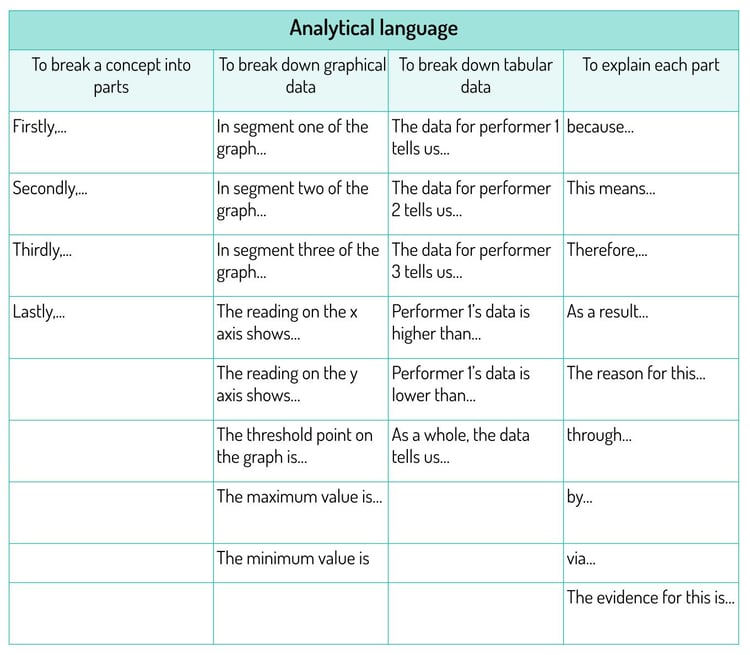
Students need to use the language in either column 1, 2 or 3 to break the answer into parts and then use column four to make their explanation of each part.
Students that follow this model are far more likely to produce balanced responses that cover all facets of a question.
For an “Evaluate” question, we would expect language such as:

Students that use this model are far more likely to produce evaluative responses.
4. Identify the second command in any “Analyse” question. All AQA linear GCE “Analyse” questions contain a second command. These are typically:
- “Analyse how…”
- “Analyse why…”
- “Analyse the trend…”
Whilst the core skill of analysing (breaking concepts into parts) remains consistent, the student needs to be sensitive to the other word. Here’s a guide: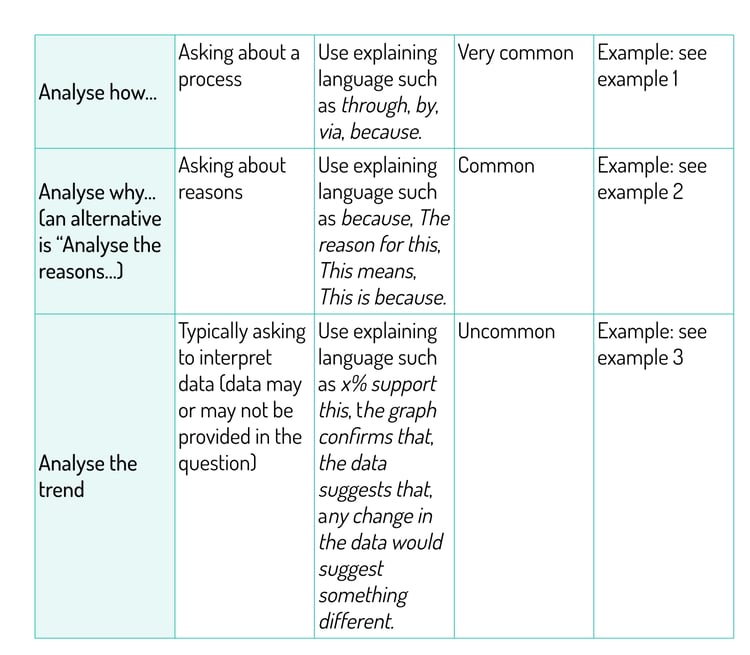 Example 1:
Example 1:
.png?width=750&name=image5%20(1).png)
Example 2:
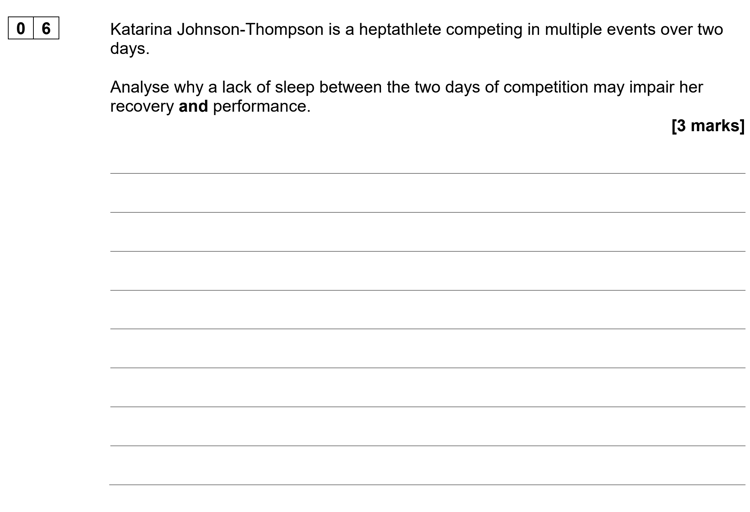
Example 3:
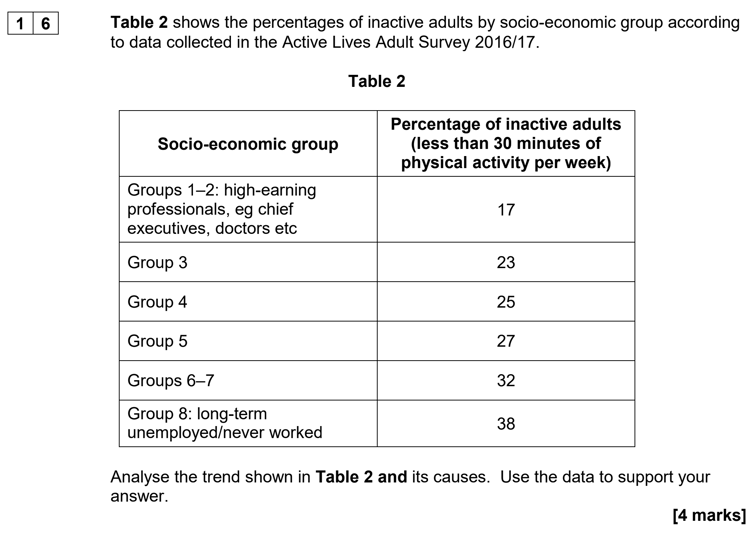
5. Stick to the context when answering questions and particularly for eight and 15 markers. AO2 skills will provide a major contribution to students’ performance on the two AQA papers. The average breakdown of assessment objectives is summarised for each paper here:
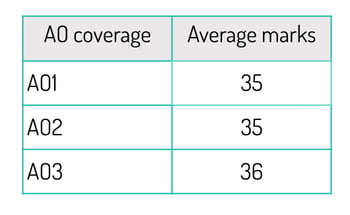
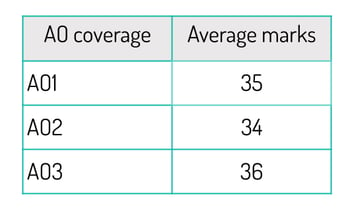
Students need to stick to the example provided in the question at all times and will not be credited for any writing that departs from the example. This applies to any eight or 15-mark question but students should be guided to do this with all questions.
Take a look at this question:
.png?width=750&name=image17%20(1).png)
If the student writes about any of the following, their writing is irrelevant to this question:
- Application to any context other than the take-off in high jump. This includes the run-up, flight and landing in high jump itself.
- Analysis of the hip
- Analysis of any movement from the upper body
- Analysis of the knee in the non-take off leg
- Analysis of the ankle in the non-take off leg
.png?width=750&name=image14%20(1).png)
If the student writes about any of the following, their writing is irrelevant to this question:
- Examples of massed practice from other sports such as practising the short serve in badminton
- Descriptions of massed practice (no breaks etc…) because the student has been specifically asked to discuss, not describe. This means, in this context, that students need to provide strengths and weaknesses of massed practice for a gymnast, not descriptions of massed practice in general.
The student needs to develop this awareness and we, the teachers, are best placed to provide it.
Q: What are James's recommendations for AQA A-level PE Paper 1?
My top 5 recommendations for AQA A-level PE Paper 1
🔑 Recommendation 1: Focus on the details.
As an example, consider the AEI on stages of learning and feedback. Students must be able to accurately relate feedback methods to different stages of learning. Many students will be limited to a narrow understanding of stages of learning or feedback separately and this will fail to prepare them for their answers.Instead, students must understand the links between the topics and why they are important. Here’s an example of my base videoing and quizzing preparation notes for one type of feedback:

My teaching notes clearly reference the links between, in this case, the associative stage of learning and the relevant types of feedback.
Furthermore, my teaching notes during a feedback lesson link the feedback knowledge to stages of learning:
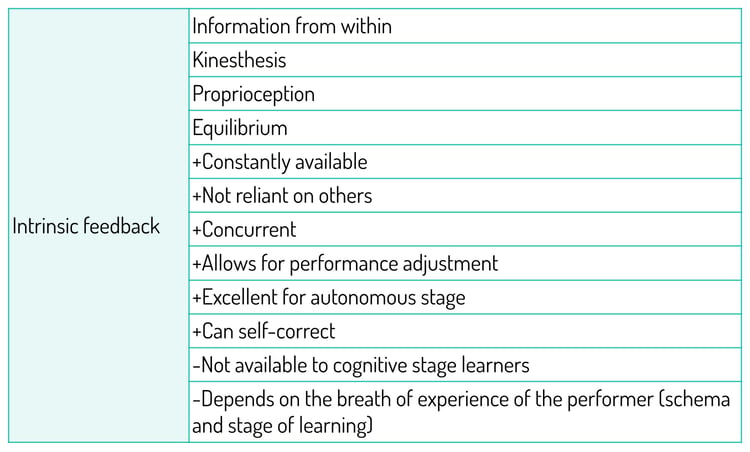
These details matter and students need to be guided to achieve this level of understanding. If we don’t guide them, they are highly unlikely to write it down in context.
🔑 Recommendation 2: When studying learning plateaus, ensure students are prepared to answer a question with one or more of three possible angles.
- What is the impact of a plateau? (AO3 skill)
- How can you shorten/prevent a plateau? (AO3 skill)
- Sporting examples linked to the causes or the solutions of the plateau. (AO2 skill)
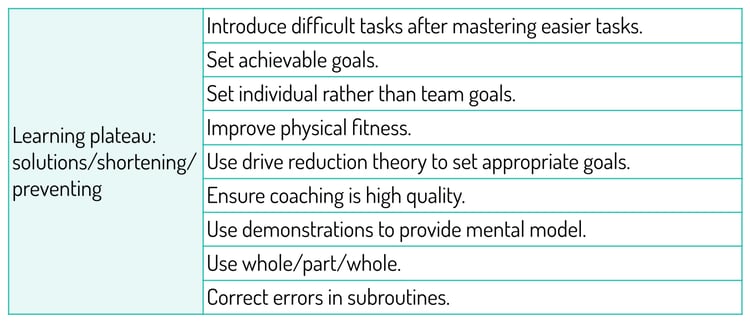
🔑 Recommendation 3: Prepare students to answer questions on the rationalisation of tennis, track and field (including the Wenlock Olympian Games) and football.
In the history of AQA papers, there have been questions on the rationalisation of football between 1780 and 1900 (eight marks in 2021) and on the Wenlock Olympian Games between 1780 and 1900 (two marks in 2019). Therefore, lawn tennis has never been questioned during this period nor has the rationalisation of track and field (although the Wenlock Olympian Games can be considered as part of the rationalisation of track and field). One possible interpretation of this is that the development of lawn tennis is “due”. Now, this is by no means a pure science nor is it even a prediction, and it is very possible that AQA could ask about the development of association football in two consecutive papers. However, the following notes should help students to prepare the relevant knowledge.
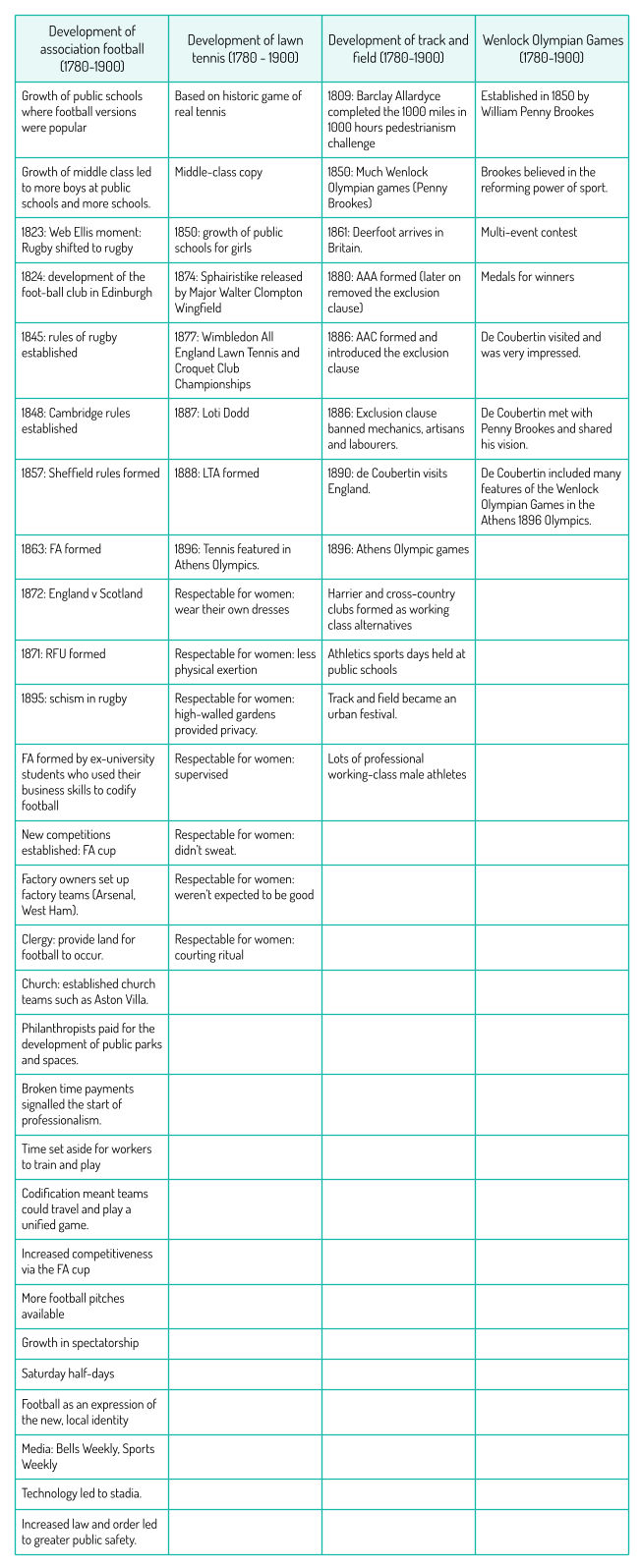
🔑 Recommendation 4: Importance of goal setting is a paper 2 concept!
This would suggest that this topic will form a synoptic question with other listed paper 1 material.Before we assume that goal setting will be matched with topics from skill acquisition, it should be noted that AQA has the right to provide synoptic questions that traverse each domain of study. In other words, AQA can legitimately provide a question on energy systems and goal setting or the relationship between Sport England and national partners and goal setting. This seems far less likely but teachers need to remind students of this.
If we assume that:
- importance of goal setting will be on a synoptic question,
- it will be matched with skill acquisition content,
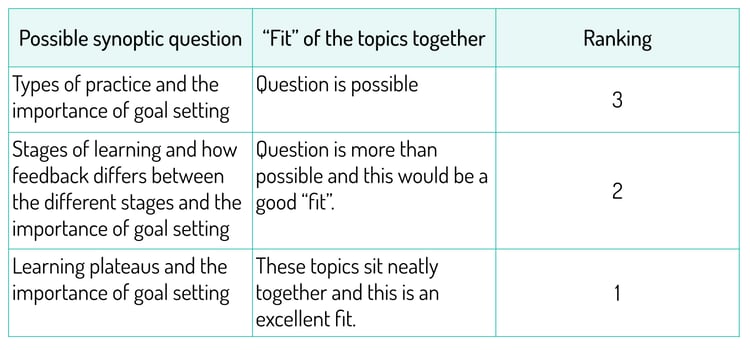
Now, students would be foolish to only prepare for questions on learning plateaus and the importance of goal setting but the analysis above should be useful.
I’d also like to take this opportunity to remind teachers that my ExamSimulator software on TheEverLearner.com contains numerous questions, mark schemes and marking guidance for the material above. The issue centres will have is that there are no examples of questions such as the ones above by AQA. These questions are available in ExamSimulator and are written by me. Please, contact me if you are interested in gaining access to these.
🔑 Recommendation 5: Positive and negative effects of dietary supplements / manipulation is a Paper 2 topic!
This would suggest that this topic will also form a synoptic question with other listed Paper 1 material. Once again, we must acknowledge that an Exercise Physiology topic could be matched with content from Skill Acquisition or Sport in Society. However, it is more likely that it will be matched with the listed Applied Anatomy and Physiology content.
Rather than providing a prediction of this question, I believe it is more valuable to students to provide the exact expected language for each supplement/manipulation.
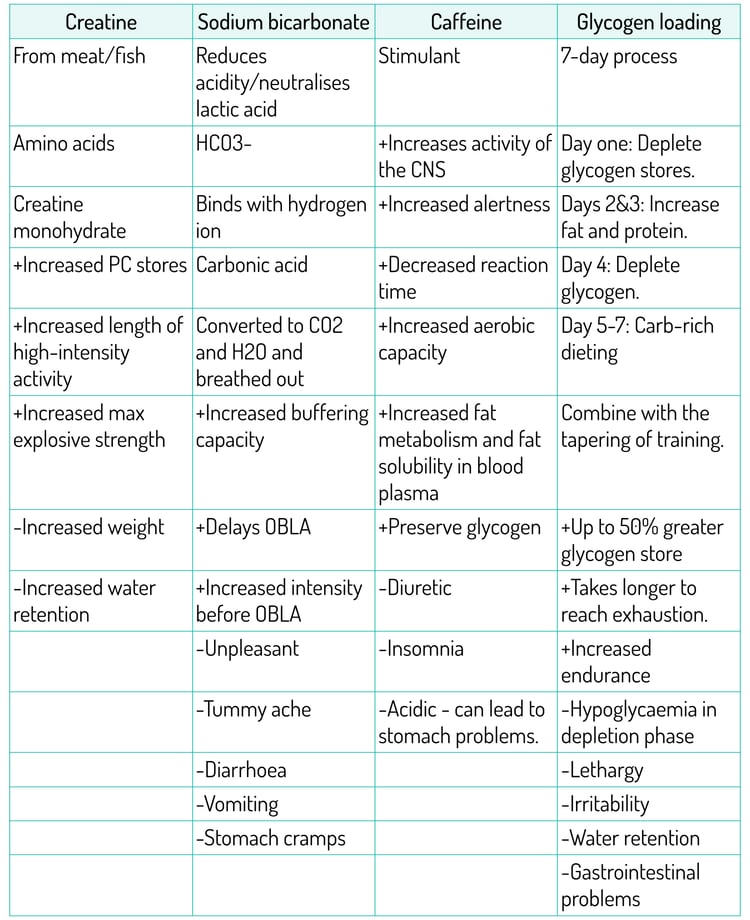
I urge you NOT to teach from this table but, rather, use this table as the base of brilliant, applied, interleaved teaching/revision. Remember: this table simply provides the key language that I include in my teaching, not the way in which I teach it.
Q: What are James's recommendations for AQA A-level PE Paper 2?
My top 5 recommendations for AQA A-level PE Paper 2
🔑 Recommendation 1: Teach the “hard bits” of leadership theories well.
Leadership theories covers all of:- Chelladurai’s multidimensional model
- Fiedler’s contingency model
- And students should also have a broad understanding of trait and social learning theories as underpinning principles (although not specifically listed for AQA).
I have often seen two specific parts of this area taught poorly. They are:
- Chelladurai’s model as a whole
- The concept of situational favourableness within the Fiedler model
In my opinion, Chelladurai’s multidimensional model of leadership is the most straightforward concept in the entire A-level PE course. However, students have historically performed poorly when this is questioned in exams (on the current and legacy specs). Here is the model:
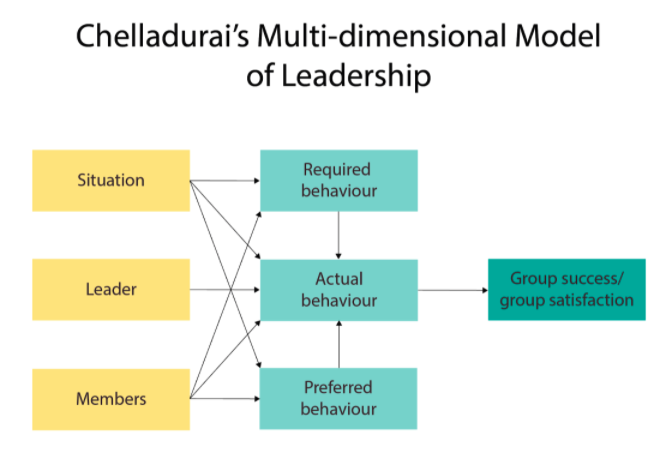 I agree that it looks complex but, once you break it down, this is the key information:
I agree that it looks complex but, once you break it down, this is the key information:
Big picture: Good leaders must be adaptable in their leadership style.
Situation: The objective sporting scenario. For example, are athletes learning a new, dangerous skill on the trampoline?
Required behaviour: The situation dictates which leadership style is most relevant. In the example above, the leader (coach/teacher) must show autocracy to keep athletes. The situation demands that spotting is not a democratic choice.
Members: These are the players, athletes or learners and they have their own experiences and personalities. For example, younger people often prefer autocratic leadership, as it provides clarity and makes them feel safe.
Preferred behaviour: This leads on from the members. In the example I have provided, the members wish to receive an autocratic style. This is their preferred leader behaviour.
Leader: This is the teacher/coach/leader as an individual and the experiences of leadership they have. For example, a PE teacher may have had great success working with school football teams and using a democratic style.
Actual behaviour: Because of who the leader is, she/he displays democracy when teaching the somersault in trampolining. It is the leader’s actual behaviour but fails to meet the required behaviour of the preferred behaviour.
Dissonance/Discord/Disharmony: In the example provided, the teacher has not adapted their leadership style and has achieved dissonance in the model. This will lead to reduced likelihood of satisfaction and success. It could also lead to a dangerous scenario.
Consonance/Accord/Harmony: By adapting the actual behaviour, the leader could bring the model into balance and the required, preferred and actual leader behaviours will all align and, in my example, be autocratic.
Likewise, situational favourableness is poorly understood by students and is a central feature of the Fiedler model. In essence, the Fiedler model states:
- If situational favourableness is either high or low, autocracy is the required leadership style.
- If situational favourableness is moderate, democracy is the required leadership style.
Students frequently write poor descriptions of situation favourableness. Use this guide to help them:
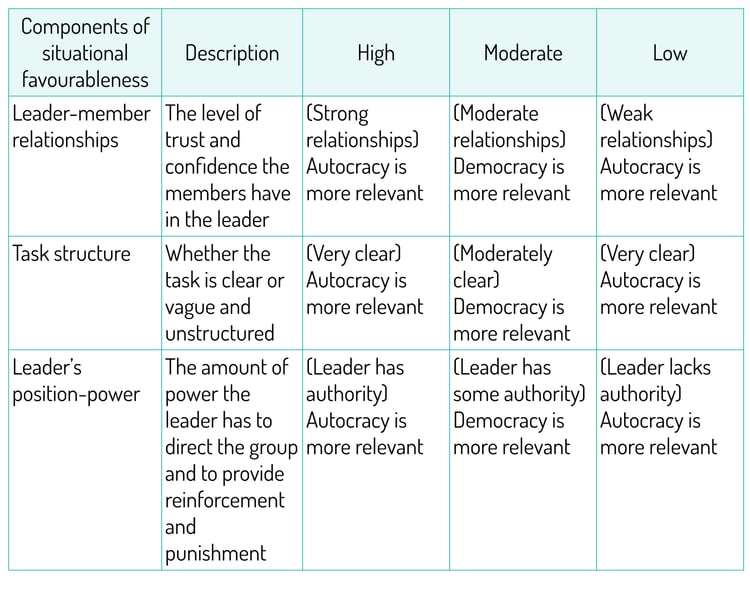
🔑 Recommendation 2: Learn the basic principle of Bernoulli and be able to apply it in four different contexts.
The Bernoulli principle will be examined this summer. In order for students to answer questions and apply their knowledge effectively, they must understand—not just recall—the base principle and then apply it to sporting scenarios. In order to do this, teachers should return to Bernoulli’s original 18th-century experiments and explain them. Bernoulli’s Venturi tube (later Venturi meter) experiments had the following principles:
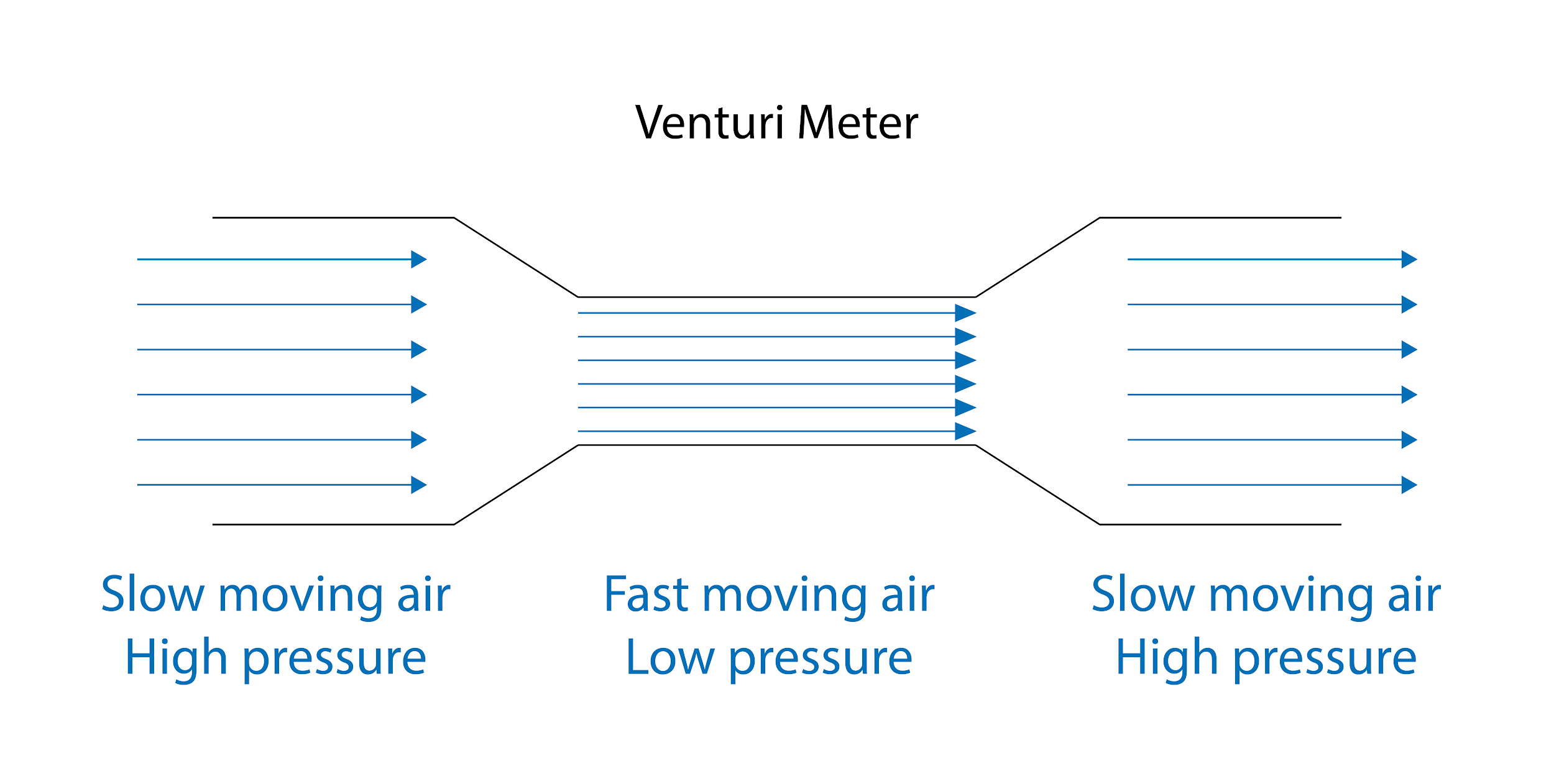
- The air passing into the chamber and out of the chamber has exactly equal mass.
- Therefore, to squeeze through the narrower part of the tube, the air has to speed up.
- The air then has to slow down when exiting the narrow part of the chamber.
- Faster moving air applies proportionally less force (pressure) on to the walls of the chamber.
- Slower moving air applies proportionally more force (pressure) on to the walls of the chamber.
If students understand this, the tendency for them to write in an applied context is far greater.
The four contexts the student must be able to write about are:
- Bernoulli lift force upwards: Discus (in flight).
- Bernoulli lift force downwards: Speed skier
- Bernoulli lift force downwards: Cyclists (this has been asked previously with a question about Laura Kenney in 2018)
- Bernoulli lift force downwards: Racing car
🔑 Recommendation 3: Recognise the extent of the injury prevention and rehabilitation topic.
This section covers all of:
- Screening
- Protective equipment
- Warm-up
- Flexibility training including active, static, passive and ballistic stretching
- Proprioceptive training
- Strength training
- Hyperbaric chambers
- Cryotherapy
- Hydrotherapy
- Compression garments
- Massage/foam rollers
- Cold therapy
- Ice baths
- Cryotherapy (as a recovery method)
Any one of the subtopics could be asked in isolation or as a pair or as part of a larger questions. Therefore, teachers need to ensure that students are knowledgeable on all these aspects. As examples, here are my teaching notes on two of those areas:
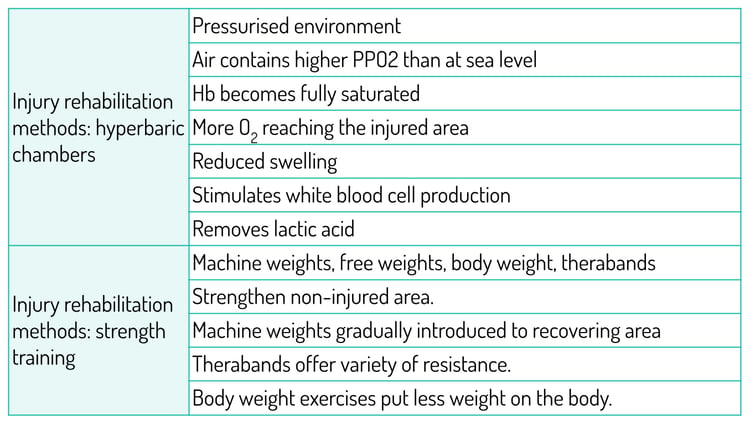
🔑 Recommendation 4: Be hyper-specific when teaching/learning key terms relating to laboratory and field tests.
I have received feedback from teachers that this topic causes a few anxieties. The key to teaching it is to be accurate and to apply that accuracy. Here are the exact key terms:

Students can simply overlearn/memorise these concepts but it would be far better if they learnt them in context. For example, ask students to use the terms to evaluate the relevance of the MSF test at elite level. How would the students apply these key terms? Or ask them to reflect on the MSF test and identify where these terms could be used. Here are some examples:
- The MSF test provides quantitative data in the form of a level and shuttle score but, if the trainer asked the athletes if they felt they had done their best, this would produce qualitative data which could be recorded.
- The MSF test is a valid measure of CV endurance for running-based games players such as hockey players but has lower validity for both runners who do not need to change direction (1500m runner) or for non-runners (swimmers, say).
- The maximal nature of the MSF test means that it has issues of reliability because participants may give up before their maximal level. In order to overcome this, a trainer should use the MSF test repeatedly over a period of months to establish the trends in participants’ scores. This will provide greater reliability.
If students cannot perform these skills and use these terms in context, they may become unstuck in the exam.
🔑 Recommendation 5: Remember that the Triadic model of attitudes also contains persuasive communication and cognitive dissonance theory as methods of changing a negative attitude and attitude formation.
At first glance, the section of attitudes seems to be about the ABC model.
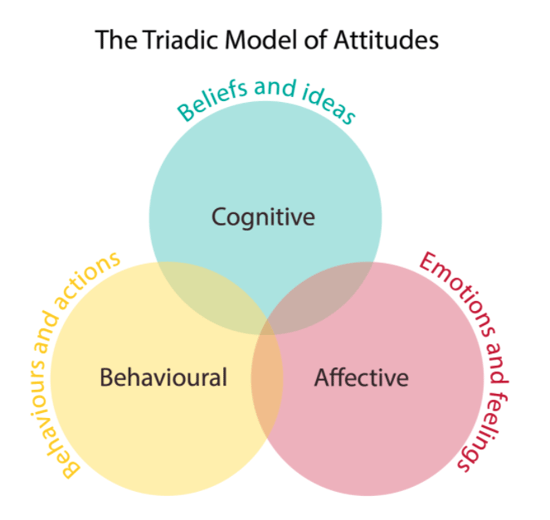
It may well be that students need to describe this model. However, I would argue that it is more likely that questions will be focussed on how persuasive communication and cognitive dissonance can influence this model and/or how an attitude is formed. Therefore, ensure excellent understanding of all of the following:
- Attitudinal formation
- Affective components of an attitude with examples
- Behavioural components of an attitude with examples
- Cognitive components of an attitude with examples
- How persuasive communication influences the cognitive component of an attitude
- Characteristics of a persuasive message
- Cognitive dissonance applied to the affective component
- Cognitive dissonance applied to the behavioural component
- Cognitive dissonance applied to the cognitive component
Here are two examples from my teaching notes:
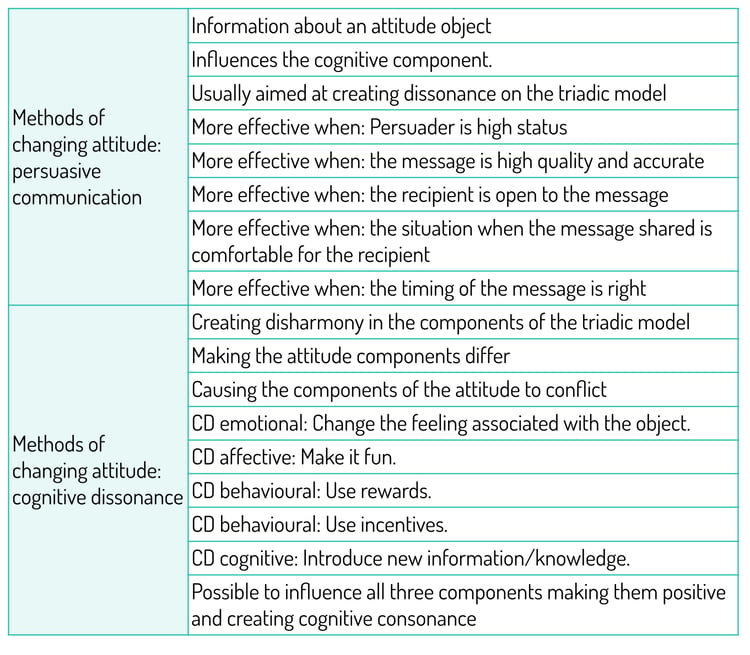
What is James's guidance regarding synoptic questions?
Across both papers, there will be a minimum of three synoptic questions. Across of exam seasons thus far (2018-2021) the breakdown has been:
- 2 x 15-mark questions
- 1 x 8-mark questions
Therefore, it is relatively safe to assume that 2022 will follow this model.
Furthermore, AQA have listed two Paper 2 topics for Paper 1 AEI. I believe this means that there will be two synoptic questions on Paper 1 and a further synoptic question on Paper 2. The Paper 2 synoptic question will be made up of Paper 2 material only and is not expected to assimilate knowledge from Paper 1 based on the AEI listings.
Two further points about synopticity:
- Please be reminded that AQA have the right to ask synoptic questions that link topics from two different sub-disciplines. Whilst it has not been normal practice, AQA could ask students to link knowledge of goal setting (Paper 2 psychology) with energy systems (paper 1 Applied Anatomy and Physiology). Please ensure that students are aware of this possibility.
- Please be reminded that a 15-mark question on goal setting and learning plateaus, say, requires the student to make connections between goal setting and learning plateaus, not simply to answer the question in two discrete parts. This is an underdeveloped skill across the PE sector and centres that achieve it will mark themselves out and will access a greater proportion of the mark schemes.
I hope you have found my insight useful. I would like to draw your attention to the revision offer that I will be providing for AQA Linear GCE (A-level) PE in 2022. My revision sessions, free to all, will cover the exact nature of all of the Advance Exam Information and will be provided in May. Timetables will be available imminently and I hope that you will choose to support me by taking part in the sessions with your students.
Thank you.
%20Text%20(Violet).png)

